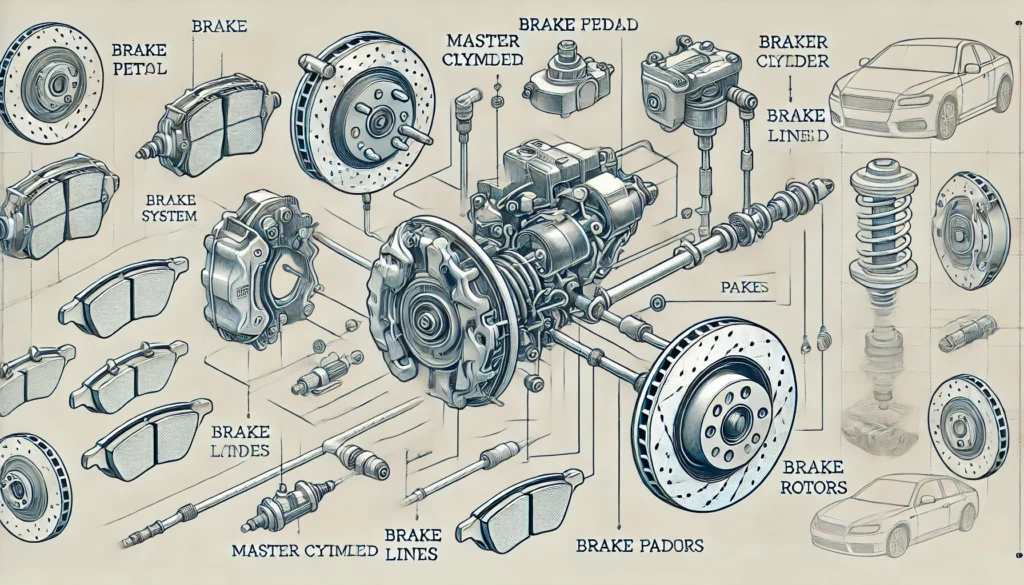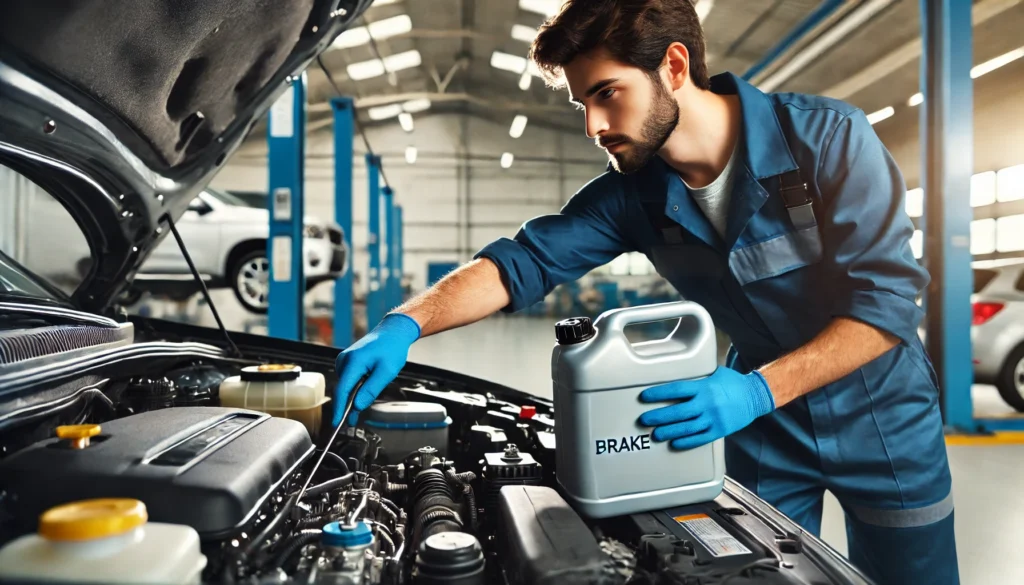The brake system is a crucial safety component in any vehicle, ensuring that it can slow down and stop efficiently. When a brake system fault occurs, it is essential to diagnose and repair it promptly to maintain the safety and performance of the vehicle. This article will guide you through the steps to repair a brake system fault effectively.
Understanding the Brake System
The brake system comprises several key components that work together to stop the vehicle:
- Brake Pedal: The driver applies force to this to initiate braking.
- Master Cylinder: Converts mechanical pressure from the brake pedal into hydraulic pressure.
- Brake Lines and Hoses: Transmit the hydraulic fluid to the brake calipers.
- Brake Calipers: House the brake pads and use hydraulic pressure to press the pads against the rotors.
- Brake Pads: Create friction against the rotors to slow down the vehicle.
- Brake Rotors (Discs): Rotating discs that the pads clamp onto to create friction.

Steps to Repair a Brake System Fault
- Diagnose the Issue:
- The first step is to accurately diagnose the problem. If the brake warning light is on, use an OBD-II scanner to read any error codes stored in the vehicle’s computer. These codes can help pinpoint the specific issue within the brake system.
- Check the Brake Fluid Level:
- Low brake fluid is a common cause of brake system faults. Check the brake fluid reservoir under the hood and ensure it is filled to the recommended level. Top it up if necessary, but also check for any leaks that might be causing the fluid level to drop.
- Inspect for Leaks:
- Examine the brake lines, hoses, and calipers for any signs of brake fluid leaks. Look for wet spots or fluid stains around these components. If you find a leak, the damaged component will need to be repaired or replaced.
- Examine Brake Pads and Rotors:
- Inspect the brake pads for wear. If the pads are worn down, replace them. Also, check the condition of the rotors. If they are grooved, warped, or cracked, they may need to be resurfaced or replaced.
- Test the Brake Pedal:
- Press the brake pedal and observe how it feels. A spongy or soft pedal can indicate air in the brake lines, which will require bleeding the brakes to remove the air. A hard pedal could indicate a problem with the brake booster or master cylinder.
- Replace Faulty Components:
- Based on your inspection, replace any faulty components. This could include brake pads, rotors, calipers, brake lines, or the master cylinder. Ensure all replacements are done with high-quality parts and follow the manufacturer’s guidelines.

Common Repairs for Brake System Faults
- Replacing Brake Pads:
- Worn brake pads should be replaced regularly to ensure effective braking. This is a relatively simple repair that can be done with basic tools.
- Resurfacing or Replacing Rotors:
- If the rotors are damaged, they can be resurfaced if the damage is minor. For more severe damage, the rotors should be replaced to maintain braking efficiency.
- Repairing Brake Lines and Hoses:
- Any leaks in the brake lines or hoses need to be repaired immediately. This often involves replacing the damaged section of the line or hose.
- Bleeding the Brakes:
- If air has entered the brake lines, it needs to be removed by bleeding the brakes. This process involves opening the brake bleeder valves and pumping the brake pedal to expel the air.
- Replacing the Master Cylinder:
- A faulty master cylinder can cause inconsistent brake pressure. Replacing the master cylinder is a more complex repair that might require professional assistance.
Importance of Professional Assistance
While some brake repairs can be done at home with the right tools and knowledge, others require professional expertise. Complex issues involving the master cylinder, brake booster, or extensive brake line repairs should be handled by certified mechanics to ensure safety and effectiveness.
Conclusion
Repairing a brake system fault involves diagnosing the issue, inspecting various components, and replacing or repairing faulty parts. By following a systematic approach and using high-quality replacement parts, you can ensure your vehicle’s brake system remains effective and reliable. Regular maintenance and prompt repairs are essential for the safety and performance of your vehicle.